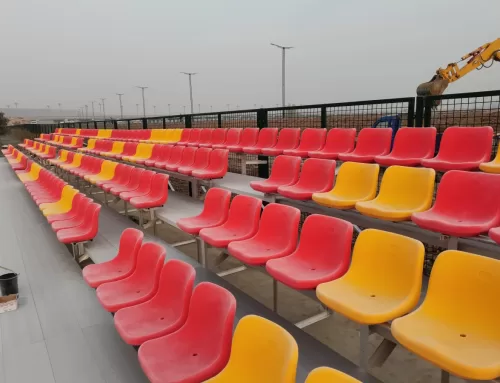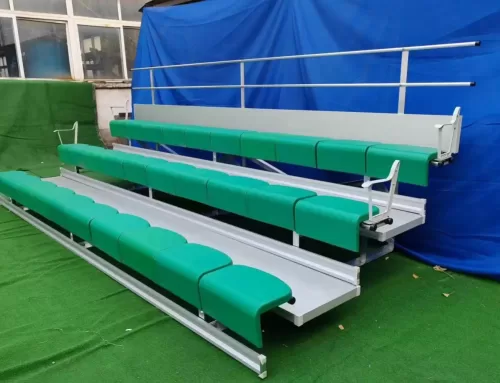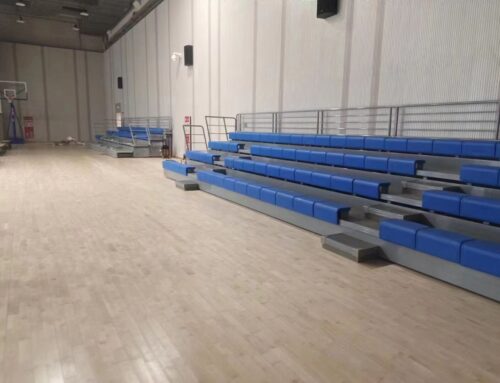As we all know that the stadium is designed for all of people to have sports fun. In the meantime, the football stadium helps us have more leisure time when fans can join the football game to share the happiness and sorrow with players. How many seats in a football stadium?
The standard capacity of football stadium is about 60-70 thousands. In recent years, the scale of new and reconstructed modern football stadiums has been controlled at around 60,000, such as the Tottenham Hotspur Stadium 58,000 seats, the Emirates Stadium 60,000 seats, and the Etihad Stadium 55,000 seats. Only a very few stadiums can reach 80,000 seats, which seems to have become a limit of the capacity of modern football stadiums. For example, the Luzhniki Stadium, the venue of the 2018 World Cup Finals in Russia, the Maracana Stadium, and the Football City Stadium, the venue of the 2010 World Cup Finals in South Africa, are all around 80,000 seats. This can not help but make people wonder why 80,000 seats have become the limit capacity of a football field? What limits the growth of the football field?
The stadium capacity is mainly affected by the comprehensive influence of the audience’s visual factors. Among them, visual distance and visual quality are the two key factors. We have to consider the maximum visual distance between the human eye and a football, and determine a maximum visual distance range based on this combination of distances. There are many aspects affects visual quality. First, we must determine the approximate outline shape of the grandstands based on the principle of equivalent watching effects. Since the outline shape is also affected by the scale and the shape of the stadium, when we use this contour shape to maximize the maximum visual range, we can get the size of the stadium under the limit.
How to determine the maximum viewing distance for watching football games?
The calculation of the maximum viewing distance of a football game is based on the physiological basis of the human eye. It is difficult for the human eye to see anything when the viewing angle is less than 4′-especially when the object is moving fast. We introduce the calculation formula of viewing angle and viewing distance to help us determine the maximum viewing distance of a football game, which is equivalent to the maximum acceptable distance for us to watch the game. L represents the viewing distance, D represents the diameter of an ordinary football, we take 0.22 meters, and α is 4′.
L=3438*D/α

According to the calculation of the above formula, we can quickly find that the viewing distance L is 189 meters, which is about 190 meters. In this case, we can get the maximum viewing distance between the auditorium and any point in the stadium cannot exceed 190 meters. Based on this principle, we can get the maximum viewing distance is the area range that is the boundary line of four overlapping parts with the four corners of the football field as the center and a radius of 190 meters. The overlapping parts by the boundary line is the maximum viewing distance range of the football game. It is not recommended to exceed this range.
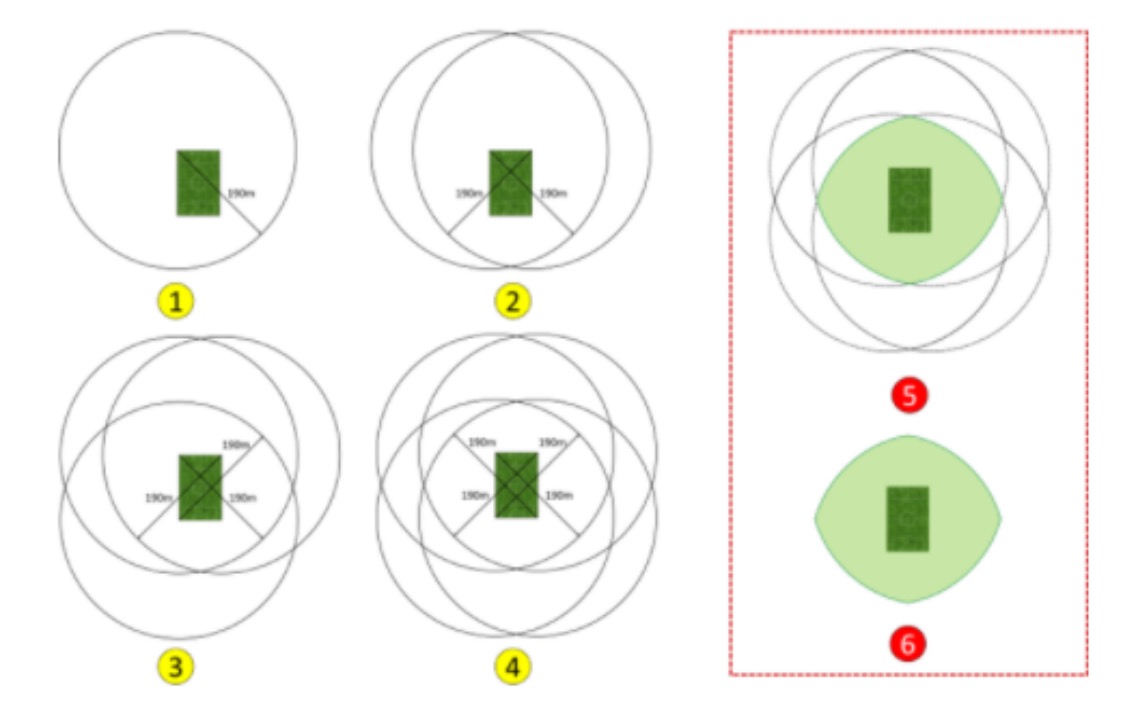
How to determine the outline shape of the grandstands using the principle of equivalent watching effects?
The ideal grandstand outline shape is combined by the outermost spectators equivalent watching effects. We want to ensure that every position on the outline of the grandstand, that is, even the last seat in every aspect of the stadium, has the same viewing effect. Some seats have better location, but the viewing distance is relatively far away, vice versa. Therefore, the outline shape and length-to-width ratio of the seats connected by the seats with the same effect for watching the game are the basis for determining the reasonable shape and length-to-width ratio of the grandstands.
Usually the size of the football stadium and spectators are quite large, so the distance plays a very important role in the effect of watching the game. In other words, the audience are more willing to consider the distance. Therefore, we mainly consider the method of equivalent viewing distance to determine the equivalent viewing range. The most exciting areas of football games occur approximately near the two goal areas. We can make an isometric map with the two goals as the focus, and an elliptical trajectory will be obtained. By paralleled the long axes of elliptical with the long axes of the playing fields, the spectators on this trajectory have the same sum of the viewing distances, and the watching effect can be guaranteed to be the same. In addition to the two goal areas, the kick-off point in the middle circle should also be an important visual focus. We also draw a visual isometric diagram of the kick-off point. This visual isometric diagram is a circle. We take the average of the above two isometric diagrams to get the approximate contour shape of the stadium stands where the football game is held.
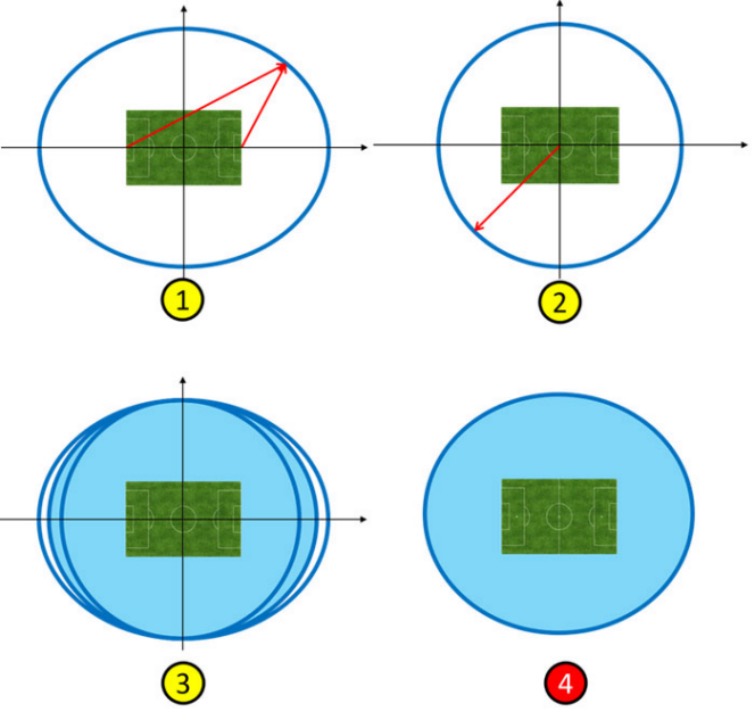
Determine the maximum seating capacity with the maximum viewing distance range and the outline shape of the grandstands
Assume that the intersection point between the outline shape of the grandstand and the horizontal axis is a, and the intersection point with the vertical axis is b. According to the values of a and b, we can get its area, which is also the sum of the area of the playing field and the projected area of the seats. We can easily obtain the size of the shape under any number of seats according to the formula of the relationship between the number of seats and the outline shape of the grandstands. The number of seats when the contour shape of the grandstand and the maximum viewing distance range appear to be the most consistent can be regarded as the maximum seat capacity we want to require.
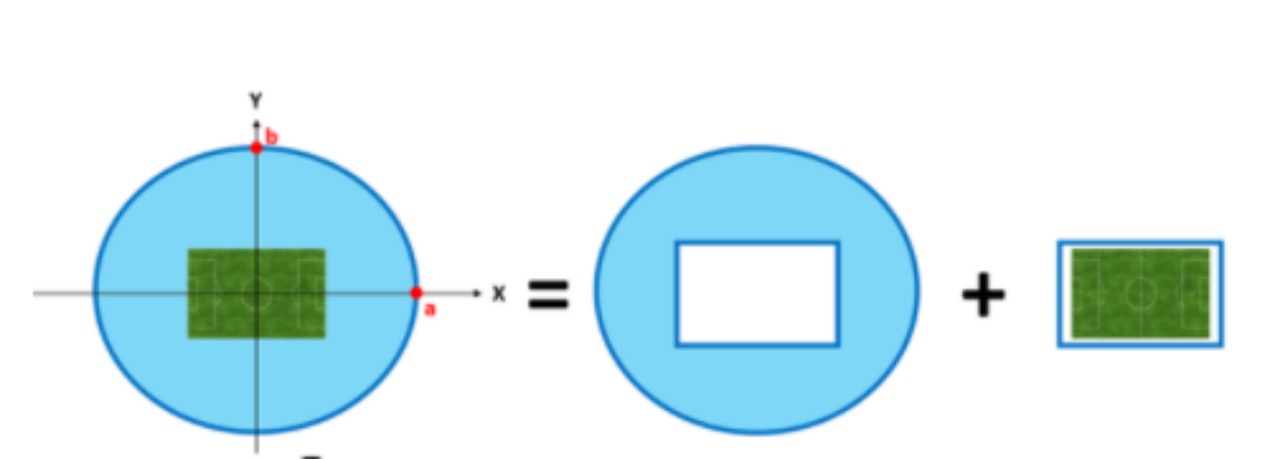
According to the above ideas, we must determine several unknown quantities first. The first is the area of the playing field M. Because the size of the playing area for official international competitions is determined, that is, 105 meters in length, 68 meters in width, 5 meters on each side of the sideline buffer zone, and 7.5 meters on each side of the end line buffer zone. Therefore, the area of the standard competition area should be 120 meters × 78 meters, which is 9360 square meters. However, FIFA does not have the ability to stipulate that every stadium hosting the competition is a professional football stadium without a track, and the number of seats calculated based on the competition venue of a comprehensive stadium that is much larger than the professional football competition venue will obviously be more conservative and more adaptable. Therefore, the area of the playing field M here is calculated by taking the area of the playing field of the comprehensive stadium. Here we take M=17000㎡. The second thing to be determined is the area of a single seat. Here we directly calculate it as 0.44㎡/seat. The last thing we need to determine is the value of a and b. According to the regular pattern, when the size of the auditorium continues to expand, the planar shape of the auditorium will transition from an ellipse to a circle. In theory, it will eventually be approximated to a circle. Obviously in this process, the ratio of a and b is constantly changing. And for this ratio, we can directly quote the book “Sports Architecture Design” published by China Building Industry Press, which stipulates this ratio. In this case, we can easily obtain the corresponding values of a and b according to the number of different seats. With the values of a and b, we can draw the corresponding outline of the stands.
Based on this calculation result, we draw the outline shapes of the four stands. Finally, put the previous maximum viewing distance range together in equal proportions, and you can clearly see that when the stadium capacity is 80,000 seats, the contour shape of the stands and the maximum viewing distance range are the most consistent, and each seat will play their greatest value.


